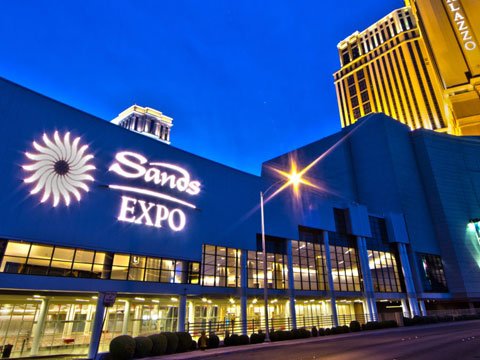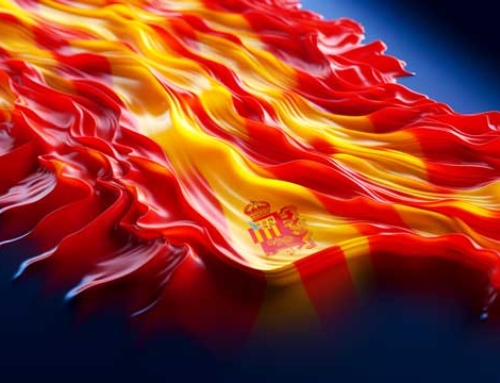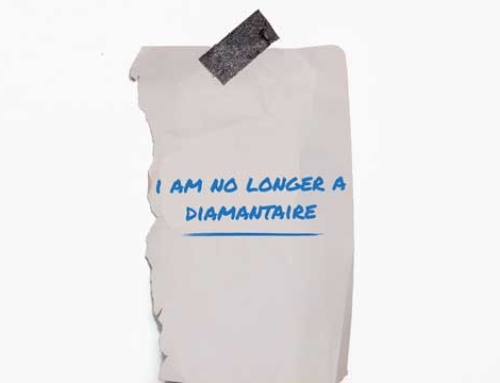image: Sands Las Vegas – JCK
Because it rained for five minutes on the opening day of the JCK show in Las Vegas on the typical sunny Strip in Las Vegas, one could not help feeling that it could be a bit different this year. Was the unusual weather a sign that diamond traders could expect similar positive surprises in the trading hall? After all, they had endured difficult market conditions over the past 12 months and could have used a little help.
At the end, the show reflected the low expectations of dealers, as the Las Vegas Jewellery Week did little to strengthen the sentiment. It reflected the strong demand for jewellery in the United States, but a difficult global environment for the diamond trade, which has persisted for some time. Eventually, the Las Vegas experience in 2019 will be remembered for the relatively cool weather, the warm political climate in the United States and, at best, the lukewarm market conditions.
However, in the context of the cautious market, a number of important issues have emerged that are likely to dominate the discussions in the market in the coming year. Here are five important things we have learned from our stay in Vegas this year:
1. There is no business in show business
The number of visitors and exhibitors at JCK has decreased significantly this year compared to 2018 – although the change of location for the Sands Expo and Convention Center made the comparison difficult.
Overall, the participants were satisfied with the new location, noting that it is easier to navigate Sands than the Mandalay Bay site where the show was held in previous years. This helped to improve the atmosphere, although it took some time to get used to this new environment.
As far as trade is concerned, the diamond section was quiet, with a sharp drop in trade between dealers. “The show is about relationships and commitment, not necessarily about sales,” says Nilesh Chhabria, Chief Operating Officer of Finestar Jewellery & Diamond, a Mumbai-based supplier. “There have been fewer visitors, but the United States is still producing good numbers, and there were orders to take home if you have the right products.”
The demand for diamonds from 0.60 to 1.99 carats, I to J, US to SI, which are typically “American” products, has been strong. The other categories were relatively weak, following the trend of last year.
“Those who prepared for the show and made appointments did pretty well,” said Rahul Jauhari, Senior Vice President of Global Sales and Marketing for Indian manufacturer Star Rays. “The appointments have turned up,” he noted.
However, many wondered whether participation in the event was worth investing in, given the calmness of actual sales at the fair. In addition, with an emphasis on e-commerce nowadays, many pointed out that traders have easy access to suppliers and buyers.
Diamond traders do not see the same value in attending fairs as in the past. This largely depends on the objectives set for the various events. As one Israeli diamond trader said, “I stopped exhibiting here a while ago. Hong Kong is more of a transactional fair. Vegas is about networking. I come to Vegas with my backpack and business cards.”
2. Mid-market technology is booming
As the number of transactions declined, more diamond exhibitors focused on demonstrating their added value. Diamond traders and wholesalers stress that it is not only the products that are in stock and have tried to seduce customers with a variety of innovations that have been exhibited.
Dharmanandan Diamonds presented the Love Facets collection, including Sirius Star and Padma models, cut by master polisher Mike Botha. The company has convincingly expressed the unique symmetry of the patented dimensions using a laser display that demonstrated the light distribution of the stone.
Online jeweller Ritani is in line with retailers’ desire to reduce their stock levels in their stores, with the launch of the “Virtual Shelf” platform at the fair. The program gives retailers access to a digital inventory of hundreds of thousands of diamonds and jewels available for purchase on an in-store iPad. The jeweller can use his own brand on the application and companies can also use the platform to register their own stock and sell it to other participating jewellers.
Some used the exhibition to demonstrate their use of technology when selling a diamond online. Finestar has developed its radiography solution to provide more accurate information about diamonds. Using a drag and drop function that overlaps the digital image of the stone with the plotted image from the GIA report of the Gemological Institute of America (GIA), the X-ray image shows where the inclusions are located on the diamond.
3. Programmes of origin are attracting increasing attention.
Other examples of companies offering technologies aimed at demonstrating traceability in their supply chains. More and more diamond manufacturers are developing such opportunities because the market recognizes the need to distinguish between ethical products.
These diamonds should be sold at a higher price. Meanwhile, a manufacturer exhibiting at JCK stated that its company was considering charging additional fees for source information and associated marketing materials to cover the cost of developing the programme. He hopes that other suppliers will follow suit.
The marketing of sustainable diamonds goes beyond traceability. The industry has indicated in Las Vegas that it needs to communicate the positive impact of diamonds on communities more effectively.
Three highlights of the exhibition emphasized this point: Botswana President Mokgweetsi Masisi gave the opening speech of the exhibition and highlighted the role that diamonds have played in the growth of his country, while his wife Neo Jane Masisi told her personal story about the development of diamonds during the Forevermark lunch. The GIA then organized a roundtable discussion in which Swarovski, Ben Bridge Jeweler, Kering and Okavango Diamond Company presented their corporate social responsibility programs.
“Many consumers want beautiful jewellery, but they also want to make sure that their purchases are free from bloodshed or environmental damage,” says Susan Jacques, CEO and chairman of the GIA. “In addition, purchasers of precious stones and jewellery want to ensure that their purchases actively contribute to the improvement of society, from the mine to the market’. We need to demonstrate the excellent work of so many people on the other side of the pipeline to eradicate misconceptions about our industry,” she added.
4. Synthetics are in development, but the message is changing
Already telling these stories seems to bear fruit, as sellers of synthetic diamonds are reluctant to market their products as a more ethical alternative to mined diamonds. “It is a mistake to present laboratory-grown diamonds as a more environmentally friendly option,” said Dror Yehuda, president of Yehuda Diamonds, who has developed the Sherlock Holmes synthetic detection device, in a panel discussion.
Mr. Yehuda noted that producers do not have to use the ethical claim to sell their product, as there is a real demand from consumers. “Lab-grown has transformed from seeking a place in the market to a phase of growth,” added Leon Peres, another panelist and CEO of Green Rocks Diamonds.
More and more retailers are selling synthetic diamond jewellery and the number of exhibitors has increased in JCK’s laboratory department.
The natural diamond industry, for its part, encourages retailers to inform consumers that the value of laboratory products is likely to decline as supply increases.
5. It is time to relaunch bridal
If not, synthetic materials will undermine the diamond dream, especially when it comes to engagement rings.
A number of leading brands, such as Swarovksi, have focused on engagement rings in their laboratory product offering. But it is not only the threat of synthetics that challenges the wedding category, since the average price of an engagement ring has fallen in recent years, as several suppliers have noted at the JCK show.
Bridal represents about 26% of the sales of diamond jewellery in the United States, but the category is getting weaker, says Charles Stanley, the U.S. president of Forevermark, who this year focuses his marketing campaign on this category with his Engagement & Commitment collection.
“Maybe it’s because millennials have a different attitude to marriage than previous generations. A formal engagement is no longer a necessity and often comes after other stages, such as having children,” he continues. The “couples decide to marry under a different set of considerations than in the past, and they spend less on the ring because they have to balance their other expenses,” adds Stanley.
The bridal market is tightening, and many collections are very similar, one exhibitor, who asked for anonymity, noticed in the JCK’s luxury room. “Millennial consumers usually choose a simpler and smaller design at a lower price,” he added.
Who’s coming back?
For many participants in the show, the challenge was to exceed the price and show the added value of their products and services. It seems that the degree of success in Las Vegas is measured by a company’s ability to attract jewellers to their marketing and technology platforms, rather than just focusing on sales.
Many diamond traders wondered if this would be enough to make the trip next year. At the very least, Las Vegas remains a unique opportunity to measure the dynamics of the industry.







